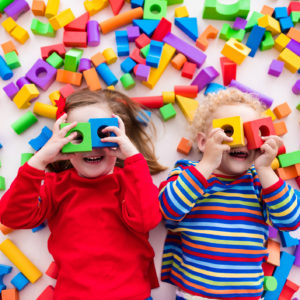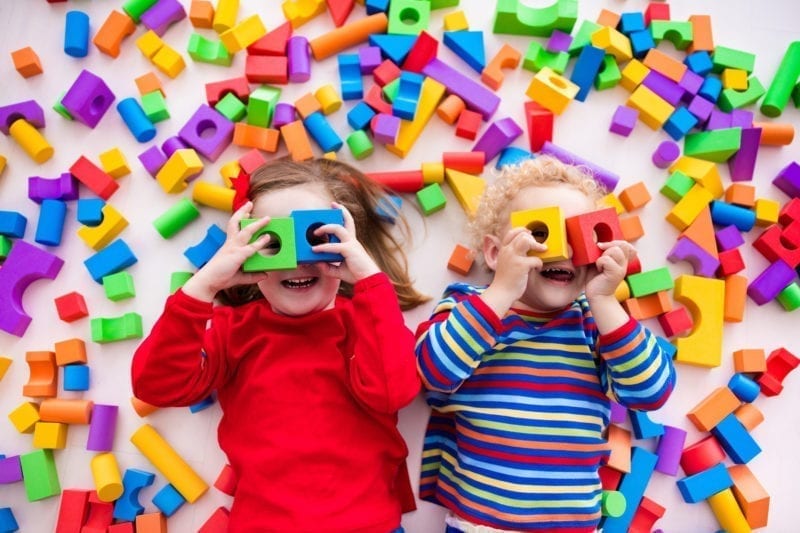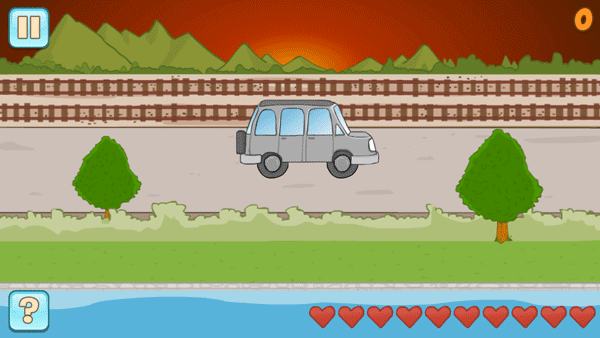Though it can take many forms, play is essentially the natural learning process that kids use to navigate the world around them. Observe closely and you’ll notice many children use play to work through real-life problems, to model the relationships they have with others, and to explore things they are uncertain about.
Play is often dismissed by adults as being frivolous or a waste of time, but research on child development tells us that this couldn’t be further from the truth!
As broad as it is, play can essentially be broken down into three subcategories:
Free play refers to activities led completely by child(ren) with no adult interference. Often enhanced by toys or other play materials, free play can also consist of pure imagination or social interaction with peers. This type of play is most beneficial for developmental learning, as kids can use it as a vehicle for their natural process of exploration.
Guided play is similar to free play, in that children can explore freely. In guided play, however, an adult (most often a teacher or caregiver) will scaffold the child’s play experience. This might mean that the adult supplies play materials or gives open-ended instructions (i.e. “Here, use this play dough to make some animals”). Guided play can be used to reinforce developmental skills that the teacher or caregiver notes as an area of improvement, such as fine motor skills.
Structured play most often refers to games or activities created by an adult for children to use. This can include board games, sports, online games, or classroom activities—any adult-created play that includes a set of rules or guidelines. This type of play is most beneficial for academic learning, and structured play activities can be created and used by teachers to reinforce specific academic skills.
Experts suggest infusing all three types of play into the learning process, in order to give students ample opportunity to garner all of playtime’s many benefits. Whether you provide time for free play, guide students through playtime, or offer educational games as part of your instruction, play can be an integral part of learning in your classroom!
Still not convinced?
Here are 7 reasons to infuse play as a learning tool in your classroom:
- Play helps children develop social skills.
Observe a group of children playing together and you’ll notice evidence of teamwork, conflict resolution, empathy, compromise, and so many other important social and emotional skills. As teachers, we know that these skills are crucial for children’s success in school and life, and many of us do our best to squeeze social-emotional lessons into our already packed curriculum. Often, however, these real-life skills are best learned just there—in real life! Social play is a safe, authentic setting for kids to practice and develop their social and emotional intelligence. - Play encourages creativity and imagination.
This goes without saying, of course, but kids are rarely more imaginative than when they are actively engaged in play. Stories, worlds, and social roles are created seamlessly in play, and the absence of external pressure means that kids’ imaginations can really push their limits! - Play helps develop critical thinking and other cognitive skills.
Many games require their players to think strategically and plan for future outcomes—a skill that is highly useful in many areas of life. Even when they are engaged in free play, many kids’ make-believe scenarios can become highly complex.Game based language learning provides instant feedback through scores, stars, and sounds to let children know they are improving. Children feel comfortable to make mistakes and not give up. In this game, points are earned by matching the cars with varying speeds. By gradually increasing the challenge, children are encouraged to keep trying and begin to develop a growth mindset.
Check out our family of apps - Play provides an opportunity to learn and use language in an authentic setting.
Whether it’s their first language or their fifth, engaging in authentic conversation is the most powerful way for students to develop strong speaking and listening skills. If a game also involves reading and/or writing, you’ve hit the jackpot! - Play helps develop problem-solving skills.
With great imaginative stories comes great conflict! Kids understand that the most exciting scenarios include an element of conflict (hello, bad guys!) that must be overcome. By dealing with imaginary conflicts through play, kids learn very real strategies for dealing with any real-life problems that might come their way. - Play fosters confidence and independence.
Students who are shy or lack confidence in other areas at school can find a place to thrive during play time, where they may feel more empowered to lead. Because play is viewed as less formal than other school activities, the anxiety that may occur throughout the school day is alleviated during play and allows students the chance to grow more independent. - Play gets kids excited about learning!
Above all else, playing is fun! Incorporating games and play time into your lessons will boost your students’ intrinsic motivation to keep learning. So whether it’s structured, guided, or completely free… Don’t hesitate to go play!
For an interactive session on Learning Through Play,
be sure to attend our next webinar on
December 20th 16:00 (CST)
Sign up HERE!
Pyle, Angela, Christopher DeLuca, and Erica Danniels. “A scoping review of research on play based pedagogies in kindergarten education.” Review of Education 5.3 (2017): 311-351. https://onlinelibrary.wiley.com/doi/10.1002/rev3.3097
Warpinski, A. (Ed.). (2018, October). Learning through play: Strengthening learning through play in early childhood education programmes. Retrieved December 2019, from https://www.unicef.org/sites/default/files/2018-12/UNICEF-Lego-Foundation-Learning-through-Play.pdf.





